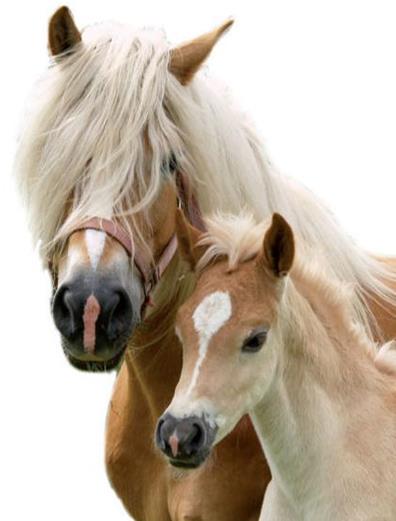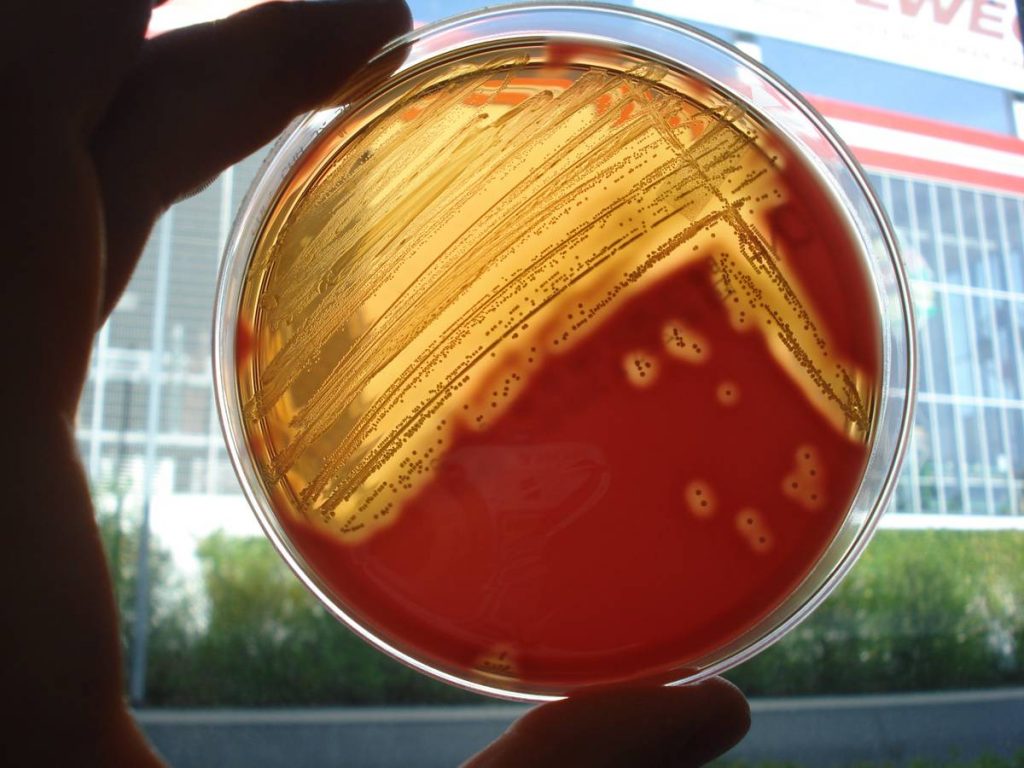During the breeding season, the breeding suitability of all mares intended for breeding must be assessed. In addition to the gynaecological examination, this also includes a microbiological examination of cervical or endometrial swabs.
It is recommended – as demanded by most stallion owners anyway – to also examine mares that are not suspicious, because even mares without any clinical signs can be infected with pathogenic agents.
It is absolutely necessary to perform a bacteriological examination of swab samples from mares with clinical signs, for example if they had a stillbirth or if they come up barren after being bred, if they show abnormalities in the clinical examination or if they had difficulty foaling last time or if they have had repeat breeding more than once in the current breeding season.
It is recommended to start testing the breeding hygiene early, before the start of the breeding season. This way, it is possible to also get infected animals into good condition for breeding without losing valuable time. If the result of a swab test is positive, treatment should be carried out before covering. Treatment success can be verified by a second bacteriological examination at the earliest 10 days after the end of the treatment. If the follow-up examination and the clinical picture show no signs, the next oestrus can be used for covering. With good breeding management and under ideal circumstances, all diagnostic and therapeutic procedures will be completed before the breeding season starts.
What needs to be considered when taking the sample:
Before taking the swab, always exclude a pregnancy! The ideal time is during oestrus when the cervix is open.
Sample collection should be carried out using a speculum and swab collection systems in which the swab is protected from contamination by two plastic covers. This prevents contamination of the swab with pathogens from the external genital area.
A clean sampling technique is essential for obtaining interpretable results!
After sample collection, the swab should be immediately transferred to a transport medium.
Arrival at the laboratory:
For bacteriological culture, the swab is spread on a blood agar plate as universal culture medium and on a selective medium for gram-negative bacteria. In addition, the swab is placed in a liquid enrichment medium. The culture media are incubated at 36 °C and evaluated after about 24 h. If no growth is visible yet, the plates are examined again after another 24 h. The enrichment medium that was incubated overnight is spread on agar plates as well, which are also evaluated after an incubation period of 24 h. Thanks to the enrichment process, it is also possible to detect sensitive or previously damaged bacteria.
Pathogen differentiation is based on culture morphology, biochemical methods and MALDI-TOF (matrix-assisted laser desorption/ ionisation time-of-flight mass spectrometry). If pathogens are found that are relevant to breeding hygiene, an antibiogram is performed using the microdilution method. If other bacteria are present, they will be listed in the findings – however, a resistance test is not automatically carried out. Yet, even pathogens classified as apathogenic in breeding hygiene, e.g. some Enterobacteriaceae, can play a role in mares with clinical signs. In these cases, it is important to state the existing disease/ symptoms on the submission form and to select a bacteriological examination if an antibiogram is needed in any case.
Usually, the bacteriological examination takes 2 – 3 days including the antibiogram.
- Fig. 1: ß-hämolysierende Streptokokken auf einer Blut-Agarplatte
- Fig. 2: Pathogenic bacteria were detected in approx. 26% of the submitted samples. In 1%, a high level of Escherichia coli was present in pure culture.
- Fig. 3: As expected, ß-haemolysing streptococci formed by far the largest group with about 84%, followed by Klebsiella sp. and Escherichia coli var. haemolytica.
Pathogenic bacteria in breeding hygiene:
The following bacteria are classified as pathogenic when testing the breeding hygiene; treatment is also recommended for clinically healthy mares before they are bred:
• ß-haemolysing streptococci
• Staphylococcus aureus
• Escherichia coli var. haemolytica
• Klebsiella sp.
• Raoultella ornithinolytica, former: Klebsiella ornithinolytica
• Pseudomonas aeruginosa
• Actinobacillus equuli
• Bordetella bronchiseptica
• Rhodococcus equi
If other pseudomonads or Escherichia coli (without haemolysis) are present, treatment is also recommended before breeding if bacterial count is high and they can be detected in pure culture. The microbiological findings should always be assessed in combination with clinical changes during gynaecological examination.
Overview on breeding hygiene examinations in 2019:
Swabs from female horses were evaluated, which were sent to LABOKLIN in 2019 by veterinarians practicing in Germany for testing the breeding hygiene.
Pathogenic bacteria were detected in approx. 26% of the submitted samples. In 1%, a high level of Escherichia coli was present in pure culture (Fig. 2).
As expected, ß-haemolysing streptococci formed by far the largest group with about 84%, followed by Klebsiella sp. and Escherichia coli var. haemolytica (Fig. 3)
Although Staphylococcus aureus was only the fourth most frequently detected pathogen with 2.6%, it is worth mentioning that 39% of the isolates were resistant to methicillin. Pseudomonas aeruginosa was isolated to a similar extent. Raoultella ornithinolytica and Actinobacillus equuli were very rarely present. Rhodococcus equi could only be grown once. Bordetella bronchiseptica was not isolated.
The mycological examination:
If no pathogens can be detected in the bacteriological examination of a mare with clinical signs or if whitish coatings appear on the mucous membrane, it may be advisable to request an additional mycological examination.
Usually yeasts of the genus Candida are detected. Among the moulds, the genus Aspergillus is the most common.
A predisposing factor for an infection with yeasts is, above all, previous long-term antibiotic treatment.
As sample material, a swab with medium is also suitable here. The test takes up to one week.
Taylorella equigenitalis:
Contagious equine metritis (CEM) is a notifiable venereal disease caused by the bacterium Taylorella equigenitalis. While infected stallions are usually asymptomatic carriers, mares suffer from endometritis and fertility disorders, but inapparent infections also occur.
According to Council Directive 92/65/EEC, swab samples must be taken from the mare from at least two sites – the clitoral fossa and the clitoral sinus. In addition to culturing the organism, PCR is available as another suitable test method. Regardless of the method, only swabs with added charcoal (Amies transport medium) are to be used.
In the laboratory, the culture should have arrived and be started no later than 24 h after sample collection (48 h after sampling for cooled transport). For PCRs, no more than 48 h should elapse between sampling and starting the test.
Culture and PCR are not only available as single services, but also in more economical profiles in combination with the test for breeding hygiene. Please note that a separate swab is required for each method.
The cultural examination takes 7 days (2 weeks for exports to Canada; 3 weeks for exports to Norway). PCR offers the advantage of a faster diagnosis within 1 – 3 working days.





